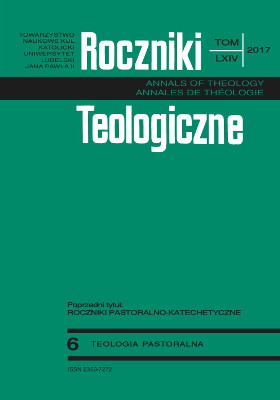Models of Salvific Activity of the Church. The State of Research and Future Perspectives
Models of Salvific Activity of the Church. The State of Research and Future Perspectives
Author(s): Wiesław PrzygodaSubject(s): Christian Theology and Religion, Theology and Religion, Pastoral Theology
Published by: Towarzystwo Naukowe KUL & Katolicki Uniwersytet Lubelski Jana Pawła II
Keywords: pastoral theology; pastoral care model; F. X. Arnold; F. Klostermann; option for the poor; pastoral love
Summary/Abstract: The main objective of pastoral theologians is to develop theologically accurate and practically effective models of salvific activity of the Church, known as pastoral care. A pastoral model is a simplified, descriptive, graphical reflection of the whole or a part of the complex salvific activity of the Church, embracing both a normative and practical element of the activity, which makes it possible to analyze and evaluate it, as well as to offer some predictions for the future (N. Hepp). The aim of this article is to present the state of research concerning the current models of salvific activity of the Church within the scope of pastoral theology and to direct us towards a need to develop new models that will take the socio-cultural context into account. Nowadays, we can talk of three such models that have been scientifically discussed on a global scale (the human-divine model by F. X. Arnold, the community model by F. Klostermann, and the preferential option for the poor). It seems, then, that there is a space for a new model of salvific activity of the Church, centered on the principle of love, or alternatively, the model of dialogue.
Journal: Roczniki Teologiczne
- Issue Year: 64/2017
- Issue No: 6
- Page Range: 41-51
- Page Count: 11
- Language: English

